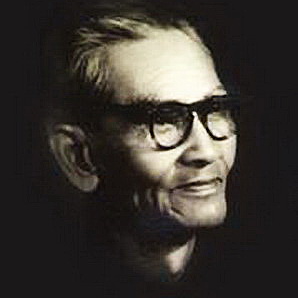Jiang Fengzhi

Jiang Fengzhi (1908-1986), a native of Yixing County, Jiangsu Province. He used to be a professor and head of the predecessor of Hebei Normal University: Hebei Provincial Women's Normal College (renamed Hebei Normal College in 1949). Famous erhu player.
In 1928, Jiang Fengzhi was admitted to the Shanghai National Conservatory of Music. In 1929, 12 students, including Xian Xinghai, Jiang Fengzhi, Chen Zhenduo, Xiong Lechen, and Hong Pan, were removed from the school because they petitioned the government of the Republic of China twice in the Shanghai National Conservatory of Music student movement. Jiang Fengzhi, Chen Zhenduo and many other students were transferred to the Music Department of Peking University School of Art. During school, Jiang Fengzhi studied erhu from Liu Tianhua, a famous Chinese music master, and graduated in 1932. From Liu Tianhua's death in 1932 to the end of the 1940s, Jiang Fengzhi held solo concerts in Japan, Qingdao, Beijing and other places, playing the ten famous songs composed by Liu Tianhua, in order to inherit and develop Liu Tianhua's performance art. From 1948 to 1957, he served as professor and department head of Hebei Provincial Women's Normal College (Hebei Normal University). In November 1957, he taught at the Music Department of Beijing Art Normal University. After the resumption of the China Conservatory of Music in 1977, Jiang Fengzhi was appointed as the vice president.
"Jiang Fengzhi pays equal attention to theory, method and demonstration in his teaching work. While fully explaining the theory and method, he is also good at 'speaking' with musical instruments. Whether it is telling students how to deal with a phrase or correcting a wrong technique of students, He often uses demonstration performances to illustrate the problem, and he has received good results. Another characteristic of his teaching is strictness and precision. Every phrase, every note, and the use of various fingerings and bowing methods in the students' learning to play, he is taught. It is a strict requirement and never engages in hasty. Jiang Fengzhi advocates and promotes Liu Tianhua's academic style in his artistic career and teaching work, teaches students according to their aptitude, and opposes following conservatives and sticking to the rules. Bad habits. He treats students as kind and enthusiastic as friends, with a humble and amiable attitude, and he is approachable. He also often expresses his views on music and art, discusses with students, and solicits their opinions.” (Wang Zhou) Jiang Fengzhi taught him in class. What the students are saying is: "Use affection to bring sound, contain but not reveal, strong but not impetuous, weak but not warm, there is stillness in movement, movement in stillness, resentment but not anger, sorrow but not hurt, strength and weakness, The weak band is strong, the virtual and the real are combined, and the 48-character art formula is easy to do. This is his generalization of the art of performance, and also the inheritance and innovation of the theory of Chinese music.
During his teaching at Hebei Normal University, Jiang Fengzhi published New China's first erhu record "Autumn Moon in Han Palace" and "Nice Night" (Beijing People's Broadcasting Equipment Factory Records) in 1950. In 1955, "Birds in the Sky" and "Happy Flowers" were published (recorded by China Records), and in 1960, "Singing in Sickness", "Joy in Bitterness", and "Songs in Leisurely Living" (recorded by China Records) fully demonstrated Jiang Fengzhi. playing style. His representative work "Autumn Moon in the Han Palace" tends to be perfect in performance techniques and art, and is very appealing. Jiang Fengzhi has been studying the art of erhu performance throughout his life, and his works include Lectures on Folk Musical Instruments, Eight Erhu Songs of Jiang Feng, and Jiang Feng's Erhu Performance Art.
Similar artist
Involving musical instruments
Involved portfolio
Involved news
Popular artists
- 01 Zhang Xiuyan
- 02 Zhang Gaoxiang
- 03 A Shicai
- 04 King Hammer
- 05 Feng Yu
 渝公网安备 50010702504639号
渝公网安备 50010702504639号